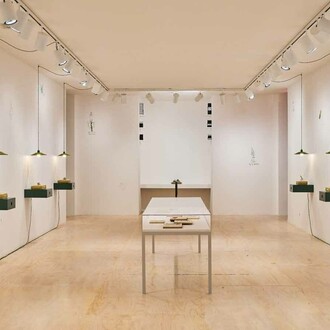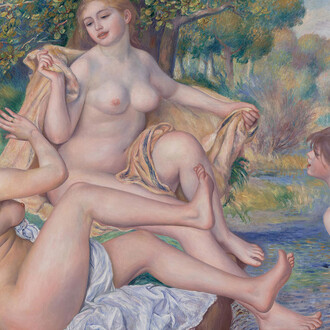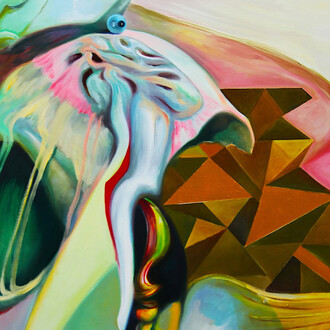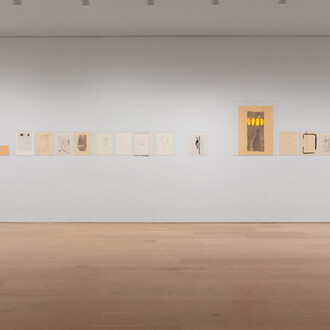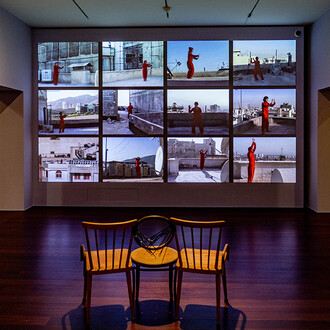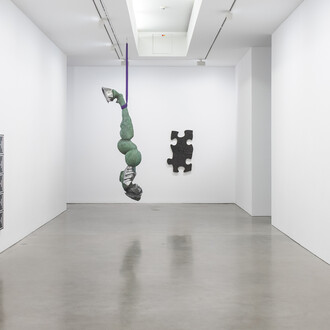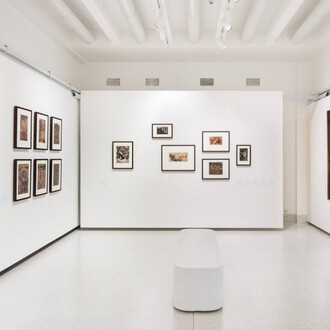Vito Acconci (1940) and Franco Vaccari (1936) are two of the leading exponents of the contemporary avant-gardes, artists whom without ever repeating themselves, without ever following trends, have managed to remain consistent in their experimentation, establishing a personal form of artistic practice without failing to sustain it with appropriate theoretical awareness. They have been brought together for the first time in a major exhibition that traces back through the most important phases of their work, from the start of their careers to the present, generating a comparative overview that respects rightful distances while revealing shared elements of their paths of research. Though the two artists have never been in direct contact, they have developed a parallel albeit diversified line of reasoning that includes visual poetry, performances, photography, film and video.
Since the mid-1970s both have experimented with Visual Poetry, taking their distance from the most widespread forms of poetic representation of their time. In that decade, the two artists also focus on direct engagement with the audience. Acconci does this through his famous performances connected with the dimension of the body, almost exclusively in small rooms or cells, reduced spatial zones in which to represent private action. His work takes on the characteristics of risk and suffering, gradually engaging completely in behavioral actions that disconcert his audience.
One good example, in this sense, is the performance Seedbed, at the Sonnabend Gallery in New York in 1972, in which the artist masturbated under the gallery floor, where the public could maybe hear what he was doing, without seeing him. That same year Franco Vaccari presented, at the Venice Biennale, Exhibition in Real Time n.4, leave a Photographic Trace of Your Passage: in an automatic photo booth installed in his solo room of the pavilion, visitors could take ID photos, and then hang them on the walls, which otherwise bore only the messages, in four languages, encouraging the audience to become part of the work.
Towards the middle of the 1970s Acconci stopped doing performances and began to create spatial installations, though continuing to use his voice to create a sense of participation. In the 1980s his interest in space led to the founding of Acconci Studio, a group of architects joining him in interventions proposing projects of an environmental and architectural nature, analyzing the concept of the home and the context.
Vaccari has also made certain works that reflect an interest in architecture. In the town of Bregenz, Austria, a museum of modern art was built, topped by the sign “Kunsthaus,” the “house of art”; in 1998 Franco Vaccari was invited there, for the exhibition “Art in the City.” Next to the entrance, he made a construction that was just the opposite of the enormous museum, in terms of materials, size and image. He placed a luminous sign on his small building, “Kunsthäuschen”, the “little house of art.”
This exhibition has been produced with the direct collaboration of the artists and Studio Acconci and constitutes a long-distance dialogue between European and American art, a historical verification of theoretical assonances and of artistic operations that still await appropriate historical analysis.
The show has been created thanks to the collaboration of Galleria Michela Rizzo of Venice and Galleria p420 of Bologna.
Palazzo Pesaro Papafava
Cannaregio, 3764
Venezia 30121 Italia
Orari di apertura
Dalle 11.00 alle 18.00 e su appuntamento
Chiuso la domenica




